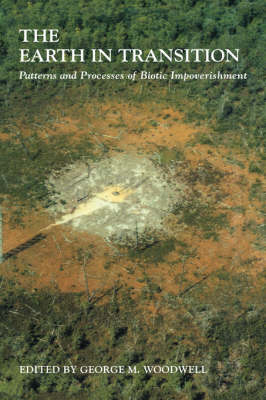
The Earth in Transition
Cambridge University Press (Verlag)
978-0-521-39137-5 (ISBN)
Life occurs, as far as we know, only as part of the earthly biosphere. Yet the earth's biotic resources are experiencing a spreading crisis that is leading not only to the most rapid loss of species in the last 65 million years, but also causing abrupt changes in the structure and function of natural communities. This disturbance, unfortunately, is the result of human carelessness in the name of advancing civilisation. As our technologies and societies continue to improve and grow, we remove ourselves more and more from our natural habitat; as a consequence, we destroy countless numbers of species of every style and complexity. To identify and begin rectifying this dangerous situation, a group of outstanding environmental scientists has compiled a collection of case studies that illustrate the changes being wrought on the biosphere by the human presence.
Preface; Acknowledgements; List of contributors; Part I. Global Change and the Patterns of Impoverishment: 1. The earth under stress: a transition to climatic instability raises questions about patterns of impoverishment George M. Woodwell; 2. The experimental impoverishment of natural communities: effects of ionizing radiation on plant communities, 1961–1976 George M. Woodwell and Richard A. Houghton; 3. Air pollution and temperate forests: creeping degradation F. Herbert Bormann; 4. The long-term effects of air pollutants on lichen communities in Europe and North America D. L. Hawksworth; 5. Biotic impoverishment in Northern Peatlands Eville Gorham; 6. Climatic change and the survival of forest species Margaret Bryan Davis; 7. The atmosphere and the future of the biosphere: points of interactive disturbance Michael Oppenheimer; Part II. Chronic Disturbance and Natural Ecosystems: Forests: 8. The restoration of Nonsuch Island as a living museum of Bermuda's precolonial terrestrial biome David B. Wingate; 9. Patterns of impoverishment in natural communities: case history studies in forest ecosystems - New Zealand A. F. Mark and G. D. McSweeney; 10. Changes in the eucalypt forests of Australia as a result of human disturbance R. L. Specht; 11. Impoverishment in Pacific Island forests Dieter Mueller-Dombois; 12. Deforestation in Brazilian Amazonia Philip M. Fearnside; 13. Incentives for sustainable forest management Robert Repetto; Part III. Chronic Disturbance and Natural Ecosystems: Woodlands, Grasslands and Tundra: 14. Changes in the Mediterranean vegetation of Israel in response to human habitation and land use Zev Naveh and Pua Kutiel; 15. Bromus tectorum, a biotic cause of ecosystem impoverishment in the Great Basin W. D. Billings; 16. Detecting early signs of regional air-pollution injury to coastal sage scrub Walter E. Westman; 17. Arctic ecosystems: patterns of change in response to disturbance L. C. Bliss; Part IV. Chronic Disturbance and Natural Ecosystems: Aquatic and Emergent Ecosystems; Section A. Marine Systems: 18. Changes in a Red Sea coral community structure: a long-term case history study Y. Loya; 19. Are deep-sea communities resilient? J. Frederick Grassle, Nancy J. Maciolek and James A. Blake; 20. Species dominance-diversity patterns in Oceanic communities John A. McGowan; Section B. Freshwater Systems: 21. Natural and anthropogenically imposed limitations to biotic richness in fresh waters David W. Schindler; 22. Human impacts on the South Florida Wetlands: the Everglades and Big Cypress Swamp William A. Niering; 23. The impoverishment of aquatic communities by Smelter activities near Sudbury, Canada N. D. Yan and P. M. Welbourn; 24. Biotic impoverishment: effects of anthropogenic stress John Cairns Jr and James R. Pratt; Part V. Conclusion: Steps Toward a World that Runs Itself: 25. Steps toward sustainability J. Gustave Speth; 26. A reaction from a multitude Donella H. Meadows; Name index; Subject index.
| Erscheint lt. Verlag | 25.1.1991 |
|---|---|
| Verlagsort | Cambridge |
| Sprache | englisch |
| Maße | 165 x 245 mm |
| Gewicht | 914 g |
| Themenwelt | Naturwissenschaften ► Biologie ► Ökologie / Naturschutz |
| ISBN-10 | 0-521-39137-7 / 0521391377 |
| ISBN-13 | 978-0-521-39137-5 / 9780521391375 |
| Zustand | Neuware |
| Haben Sie eine Frage zum Produkt? |
aus dem Bereich


